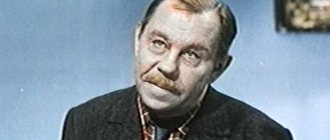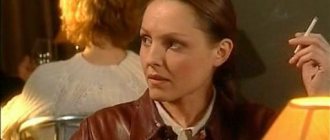From the biography
Karel Gott, the only and long-awaited child, was born into the Gott family in July 1939 in the city of Pilsen, part of the Protectorate of Bohemia and Moravia. Now the city belongs to the Czech Republic. In Pilsen, as a child, he experienced a war that was deeply etched in his memory, especially since the house where the Gotts lived was bombed, and he and his parents were under the rubble for two days. Karel in one of his interviews shared his thoughts about that bombing:
…I was scared. Until that moment, I had only seen prayer as a ritual, but when this happened, my mother and I prayed. And from that time on, I no longer asked my dad about bombers, but began to wonder how such a war even happened. And why…
During the war the family lived in Pilsen and then moved to Prague. After finishing school, Karel tried to enter the Academy of Arts, Architecture and Design, but failed the exams and, in order not to waste time, went to study at a vocational school to become an electrician, as he indicated in his biography. After graduation, Karel Gott worked at a tram depot.
While studying at a vocational school, Gott took part in student concerts, experimented with playing the guitar, and became interested in jazz. As a result, I decided to focus on singing, even taking private lessons. Already in the 50s he performed as an amateur in cafes and clubs and began to try himself in singing competitions.
Childhood
The future musician was born in July 1939 in the city of Pilsen. He became the only long-awaited son of Maria and Karl Gott. The measured life of the family was disrupted by the war, the house collapsed after a bomb hit, and the Gotts were forced to move to the village to live with their grandmother. The rural idyll lasted until 1946, then the parents managed to find suitable housing in Prague.
In 1954, Karel graduated from school and decided to continue his studies at art school. However, he was unlucky here; he did not qualify for the competition. Subsequently, he received his education at a vocational school, studied in his native Pilsen, in Cheb and Prague, mastering the non-creative profession of a tram track electrician. In 1960 he got his first job.
View this post on Instagram
A post shared by Inna Mironova (@inna_andrei_aleksandr) on Oct 2, 2020 at 8:02am PDT
What made him think about singing was a gift from his mother, who presented him with a certificate for a studio recording of a song. Karel really liked the result, and he decided to try his hand at music. Gott worked, and in his free time he took part in amateur competitions and performances. However, the singer with a very unusual voice did not impress the jury.
He would have remained an electrician, singing for the soul, if he had not met in the fall of 1957 with producer Karel Krautgartner, who invited Karel to sing with an orchestra in the capital’s Vltava cafe. For two years he combined work at a factory and singing in restaurants in the capital.
At the same time, Karel takes vocal lessons and learns how to perform on stage. In 1959 he left the factory and entered the State Conservatory of Prague to study opera singing. One of the teachers who choreographed the singer’s voice was Fyodor Chaliapin’s student Konstantin Karenin.
Early career
In 1958, Karel Gott took part in an amateur singing competition called “Search for New Talent”, but did not win prizes. However, in the same year, a 19-year-old amateur singer gets a lucky ticket; he receives first place in a singing competition in the Vltava Prague cafe. This was the impetus for the decision to say goodbye to trams and take up professional singing.
In his biography, Karel Gott talks about his years of study with Fyodor Chaliapin's famous student, Konstantin Karenin, at the Prague Conservatory, where he entered in 1960. The teacher, knowing about Gott's desire for popular music, instructed him not only in classical Italian works, but also devoted enough time to the music that the guy liked. After studying for three years, he left the conservatory and continued to take private lessons in voice training and singing.
In 1963, Karel Gott was invited to the Semaphore Theater, which was one of the leaders in Czech pop music; one of his songs won the prestigious Golden Nightingale competition.
Karel Gott: biography
“The Golden Voice of the Czech Republic”, “the Czech Nightingale” - this is how the unsurpassed Czech singer Karel Gott is called. An attractive guy with an amazing voice quickly rose to the European musical Olympus and became an idol for millions of people. His songs thundered and are now popular in the countries of the Old World, and he himself has not left the stage for more than two decades.
Video course “Spring”
Landscaping for busy people, a beautiful garden without the hassle
A training course for those who want to make their dacha beautiful and prefer to spend their time, effort and money wisely.
Special offer! 50% discount! Make good use of your self-isolation!
₽ 1200.00 ₽ 600.00
MORE ❯❯❯
The future musician was born in July 1939 in the city of Pilsen. He became the only long-awaited son of Maria and Karl Gott. The measured life of the family was disrupted by the war, the house collapsed after a bomb hit, and the Gotts were forced to move to the village to live with their grandmother.
Karel Gott in his youth
The rural idyll lasted until 1946, then the parents managed to find suitable housing in Prague. During his school years, Karel discovered his talent as an artist, and the boy began to draw with pleasure. He dreamed of mastering this profession and becoming a famous painter.
In 1954, Karel graduated from school and decided to continue his studies at art school. However, he was unlucky here; he did not qualify for the competition. Subsequently, he received his education at a vocational school, studied in his native Pilsen, in Cheb and Prague, mastering the non-creative profession of a tram track electrician. In 1960 he got his first job.
Karel Gott in his youth
What made him think about singing was a gift from his mother, who presented him with a certificate for a studio recording of a song. Karel really liked the result, and he decided to try his hand at music. He worked, and in his free time he took part in amateur competitions and performances. However, the singer with a very unusual voice did not impress the jury.
He would have remained an electrician, singing for the soul, if he had not met in the fall of 1957 with producer Karel Krautgartner, who invited Karel to sing with an orchestra in the capital’s Vltava cafe. For two years he combined work at a factory and singing in restaurants in the capital.
Karel Gott on stage
At the same time, Karel takes vocal lessons and learns how to perform on stage. In 1959 he left the factory and entered the State Conservatory of Prague to study opera singing. One of the teachers who choreographed the singer’s voice was Fyodor Chaliapin’s student Konstantin Karenin.
Creating your own theater and touring
In 1965, Karel Gott, with two colleagues from Semaphore Jiří and Ladislav Šteidla, created his own Apollo Theater, wrote his own songs and toured throughout Czechoslovakia and abroad. That same year, Gott released his album Karel Gott Singswith. A sharp turn in Karel Gott's biography occurred in 1967, when he closed the theater and went on tour to America, from where he returned famous.
While working abroad under contracts with Polydor/Deutsche Grammophon Gesellschaf, Gott releases his albums with songs and singles. Representing Austria at Eurovision in 1968, he took 13th place.
Music career
The beginning of the sixties brought the fashion for the twist to Prague, Karel Gott got into the trend and gained incredible popularity. Magazines with his photo on the cover were sold on every corner, and concert tickets were impossible to get. Songs recorded for cinema gained great popularity. For example, the song for the animated series “The Adventures of Maya the Bee.”
In 1968, Karel went to conquer Eurovision, competed from Austria and took 13th place.
The peak of his career began in 1970. Gott often delights fans with new songs that instantly turn into international hits, and makes cover versions of famous melodies. The Czech and German versions of “Bells of Happiness,” recorded in a duet with Darinka Rolintsova, remained on the charts in European countries for a long time.
“The singer from Prague Karel Gott comes to us every year!” - this joke belongs to Vladimir Vinokur and characterizes the incredible popularity of the Czech nightingale in the vastness of the Soviet Union. Indeed, the singer, who performed songs in Russian and was fluent in the language, received a unique opportunity to tour the country, which, in principle, was not allowed to foreign performers.
It was incredible glory. The singer took part in the television festival “Song-87”, singing the song “Father’s House” in a duet with Sofia Rotaru. His songs were recorded on records that sold millions of copies. Being a polyglot, Karel sings in Russian with almost no accent, impressing the audience with his incredible charisma.
For performances in the USSR, his songs were translated into Russian. And now on the Internet you can freely find recordings of “Lady Carnival”, “I Open the Doors”, “Paganini’s Violin”.
Cinderella from the film “Three Nuts for Cinderella,” jumping to his famous song “Where is your nest, little bird,” became an idol for millions of Soviet children.
Museum created in his honor
In the biography of Karel Gott, personal achievements include not only hundreds of recorded albums and singles, work on the set and television. He is, one might say, the only one in the Czech song world who became the winner of the national competition “Golden Nightingale” thirty-four times, receiving the last award on the eve of his 70th birthday, in 2008. 35 kilometers from Prague, Karel Gott has his own museum, which contains all his awards and the story of his life.
Whatever Karel Gott did in life, he succeeded. True, critics believe that he never learned to dance. Most likely, he simply did not try to do it.
But in the 90s, the singer fulfilled his old dream - to paint pictures. He is very sensitive to painting:
…Painting balances what I cannot express in my songs. I play with the mood, which is immediately reflected in the painting: how I see nature, how I see people, how I see light and shadow. An artist has this opportunity; he observes life and people a little more and from a different perspective than a person who does not draw. And so in every song. It's the same in drawing. Paints dry and change, and the artist must have the instinct to foresee what they will become after drying...
[edit] Creativity
[edit] 1960s
Čas růží (Delilah)
After returning from Las Vegas, Gott became a popular singer in Czechoslovakia for many years. In 1969, he recorded the album “Vánoce ve zlaté Praze” (“Christmas in Golden Prague”), which was highly appreciated by both the public and music critics. About 600 thousand copies of the record were sold in Czechoslovakia alone. The album is considered the best Czech Christmas album of all time.
The voice of Karel Gott is of interest to Polydor management. In 1967, he entered into a contract with this company and recorded his first disc in German - “Die goldene Stimme aus Prag” (“The Golden Voice of Prague”). His success is so great that Gott becomes a superstar almost overnight. Sales of the record reach 200 thousand copies[2]. Next year the singer receives a gold disc for it.
In 1968, with the song “A Thousand Windows” (“Tausend Fenster”), Karel Gott represented Austria at the Eurovision Song Contest (Czechoslovakia, as a country of the socialist camp, did not take part in it). And although the singer took only 13th place, participation in the “Western” music competition further fueled the singer’s popularity in his homeland.
[edit] 1970s
Gott further expands his vocal repertoire into almost all types of musical genres. His voice explores new possibilities and brings new surprises. Since the second half of the 1970s, when a new disco style emerged in pop music, the number of hit albums in the singer’s repertoire has increased.
The singer is in the best shape, touring extensively and successfully at home and abroad, taking first places at music festivals, participating in numerous television shows, starring in full-length feature films and documentaries, hosting his own music program on Czechoslovak television, receiving dozens of prestigious awards, “golden” ", "silver" and "platinum" discs.
[edit] 1980s
During this period, Gott's popularity reached its peak. He performs in packed halls, stadiums, and sports complexes. His voice is enjoyed in all corners of Europe. The singer keeps up with the times, mastering new musical trends and styles. For the first time, he has serious competitors in the form of young performers on the Czech stage. However, their competition only briefly interrupted Karel Gott's dominance in Czech pop music: at the end of the 1980s they lost ground. In 1989, just on the eve of the “Velvet Revolution,” the singer celebrated his 50th birthday, little by little becoming a master who no longer strives to take first place in the charts at any cost, but in return selects a demanding repertoire.
Personal life
The biography of Karel Gott (there is a photo of the singer in the article) would not be complete if we did not mention his personal life. Of course, such a handsome man could not help but have relationships with the fair sex, unless he is homosexual. One of the Czech newspapers, preparing material for Gott’s 70th birthday, dispelled this myth by making an excursion through his life. The newspaper article listed the names of women with whom Karel Gott, according to the newspaper, could have had a serious relationship. At that time, Gott already had two adult illegitimate daughters: Dominica was born in 1973, and Lucia in 1987.
In 1999, rumors appeared that Karel Gott had found a chosen one with whom he would connect his life. This is German Marika Scheres, who is much younger than the singer. But these were just rumors. But Ivan Makhachkova was able to curb the inveterate bachelor. A turning point came in the biography of Karel Gott with the appearance of Ivana. The relationship with her lasted seven years. Ivana did not insist on the wedding, did not ask to be his wife, she simply systematically accustomed Gott to family responsibilities, shopping, and unobtrusively taught him to use the Internet. She turned the bachelor's house of her chosen one into a cozy family nest.
Ivana and Karel Gott have two wonderful daughters. Ivana gave birth to the youngest, Nelly Sofia, 4 months after the wedding, while the eldest joint daughter, Charlotte Ella, was already two years old.
And a little more about the “Czech nightingale” named Karel Gott
- With pleasure! We re-enter the villa in Lanach, where there is an exhibition dedicated to the life and work of Karel Gott, and find ourselves in a hall dominated by a massive black grand piano, on which stand three framed photographs. Two of them depict Karel Gott's daughters and in the middle between them is a portrait of Frank Sinatra.
“Karel Gott performed at a legendary concert in Las Vegas in 1967 at the Frontier Hotel, where he alternated singing with various stars. I personally heard how Steidl, who was then accompanying Karel Gott with his orchestra, reacted to the question of what period in his life was decisive for his work? He replied that it was a tour to Las Vegas. I can imagine that Karel Gott would have answered the same thing, because he was one of the brightest stars there, and it was there that he gained the experience that he later used in the Czech Republic. De facto, Karel Gott's vocal career began in 1967. We can say that it was Frank Sinatra who became one of his first teachers. At that concert in America, Karel Gott saw “One Man Show” for the first time, which had not yet reached here in those days. He had the honor of performing with Frank Sinatra in the same program. And on this photograph, which dates back to somewhere in 1991, is the autograph of the great American star.”
But the most decisive thing in Karel Gott’s vocal career was his acquaintance with Professor Karenin, who not only gave the then young singer his voice, but also taught him other things that turned out to be no less important.
“I am indebted to Professor Konstantin Karenin for the high singing technique, which, moreover, was to the taste of people. He taught me not only singing technique, but also philosophy: Why do I sing? Who am I addressing with my songs? Who do I want to feel? And how to make me look really sincere, so that people believe me, that I believe in what I sing about, as if I were making up this song on the fly, as if at that very moment I am singing about what is coming out straight from my heart. He taught me all this. I really learned to sing lyrical passages really well. As a rule, authors write lyrical songs for tenors, where a declaration of love is made to a woman and it is clear that I should perform such songs in a gentle voice. I can’t yell, because she would immediately get scared and run away - these were the words of Professor Karenin,” Karel Gott shared his memories with us.
Well, we are returning to Gotland again to look with you and find out what is in the maestro’s office, which has a special atmosphere created by massive dark furniture in the old English style. One of the main exhibitions is located here. One of the walls is decorated with a world map, which shows where Karel Gott has been. As Blanca Frantseva notes, it could be changed every week, because the singer never stays in Prague for long, he constantly travels and tours.
“On the map you can see that the singer traveled most of all to Europe - far and wide, and, of course, all other continents. The map is supplemented with photographs of some travels. It is impossible to fit everything in, because this wall, of course, would not be enough. Karel Gott is a highly erudite person who is well versed in literature, especially in historical world literature. He is fluent in several languages, which he uses not only to communicate with people abroad, but also to perform his songs. Most often he speaks German and English, and in his singing he has used as many as 15 world languages. In this sense, Karel Gott is very consistent. If the audience he is singing for speaks a different language, he will definitely learn at least one song in their language. You can see from these facts that Karel Gott approaches everything professionally.”
“I’ve been around the whole world on tour and I want to note that people have always been interested not in how I sing, but, first of all, where I’m from, what inspires me to sing. They began to take an interest in life in my country, and I was fully aware that people would judge Czechoslovakia and the people inhabiting it by me. It has always flattered me to be a representative of the country, and I felt quite comfortable in this role. Foreign audiences have always been interested in our traditions. When I started singing, imitating some American singer, even if he was my idol, people stopped being interested in it. They thought it was a copy, not even the best copy, because if someone has their own style and sings a song that is a worldwide hit, then I certainly try to sing it in my own way. Even if I borrowed a song from my idol, I want people to say - this is Karel Gott, this is typical Karel Gott. He doesn't look like Tom Jones at all. This is precisely what is very important, that you are classified as a singer in a certain country, you are classified in a certain style category and, I add with a little humor, in a certain fee category.”
— Olya, what do you think the stars would do without their fanatical fans?
“I think, Tanya, that they simply wouldn’t be stars.” And the fans, in fact, do amazing painstaking work that even the singers themselves, their loved ones, and their managers would hardly do.
- Can you be a little more detailed here? What do you mean?
— Blanca Frantseva will tell us better about this, as well as about what kind of music the legendary singer prefers to listen to in his leisure time:
“In this same office you can see a number of books, or rather albums, that we received from fans of Karel Gott. These albums contain complete information about the singer and his solo career: clippings from newspapers and magazines. All this was glued into albums, which turned into a kind of encyclopedia of Karel Gott’s life. There are also records and CDs with recordings that Karel Gott likes to listen to. If Karel Gott relaxes and listens to music, then his musical preferences relate to swing or jazz style; naturally, Elvis Presley also influenced his work. But his favorite singer was always Ella Fitzgerald.”
You know, Olya, it seems to me that in recent years, Karel Gott has not created anything new, but has only endlessly received all sorts of titles and titles. For example, the other day, based on a public questionnaire, with the help of which people had to choose Miss and Mister Charm of 2007. Who do you think became them?
— I think that on the male side, of course, Karel Gott. Well, for women, perhaps Helena Vondrachkova.
- Well, you made a mistake about the ladies, this is Lucia Bila. But we will still return to Karel Gott. It seems to me that he is no longer doing anything to increase his popularity, because his image has long been working independently of his personality.
- You're right, Tanya. Moreover, Karel Gott is now more busy with family affairs. Soon he should have a fourth descendant. And the birth of his third daughter inspired the maestro to create a new album, which is dedicated to all mothers and all children. And this album is called “Everyone has their own dream.”
“I was inspired to create the latest album, “Everyone Has Their Own Dream,” by the birth of my third daughter, a child with whom I live under the same roof for the first time in my life. This is a completely different situation than the one I found myself in all my life when I had children. They grew up without me, and I visited them only when possible. And, despite the fact that I adore my first children, who received everything from me, I did not feel that I was a real father to them. The birth of my third daughter changed me both as a singer and as an artist. I discovered feelings in myself that I had never experienced in my life. And with all these internal changes, I began to create this CD, which included songs I selected from various television films, series, fairy tales for children, be it classics from films that have already become cults in our country, or , of course, there is also a fairy tale “Morozko”, “Three Nuts for Cinderella”, “Maya the Bee”.
There is an American cartoon "The Lion King", the music for which was created by Elton John. There is a song there, “Circle of Life,” which I really liked. You can hear it performed by me on this CD.”
And at the end of our program we are going to the museum hall of fame. In the hall of fame there is a mini-stage where Karel Gott is depicted in real-size photo wallpaper. Visitors love to take pictures there. Olya and I also decided to take a photo there. Nearby there is a round display case in which the awards received by Karel Gott for his vocal talent are displayed, for example, the first twenty “Golden Nightingales”, then they were replaced by garnet brooches, and the latest version of the Czech Nightingale is a glass sculpture of a nightingale. There are international awards on the top shelf, and gold records and other awards and honors hang on the wall.










